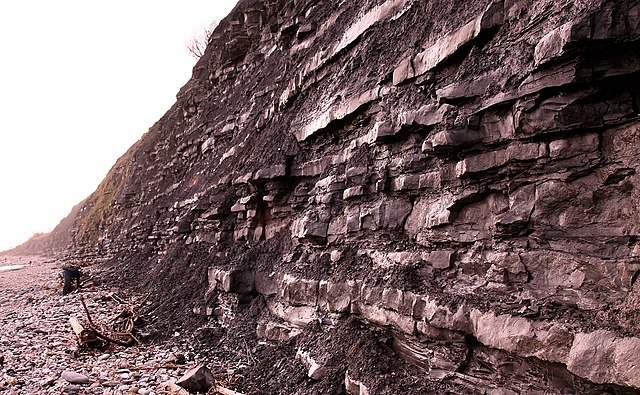Rhythmite
layers of sediment or sedimentary rock laid down with obvious periodicity and regularity From Wikipedia, the free encyclopedia
A rhythmite is layers of sediment or sedimentary rock laid down in a repeated pattern. This pattern may be varves, which are an annual pattern, or shorter or longer-term rhymites. Tides in some places have left rhythmites.[1]



Longer-term rhythmites
Rhythmites can show long-term prehistoric events, such as periodic floods, sea level changes, glaciation changes, earth's orbital variations, and other periodic climate changes.
Many rock formations show repeating patterns of strata. For example, clay layers may alternate with sandstone layers; or carbonate layers alternate with shales. This is usually caused by repeating cycles of climate. In warmer times the sea rises, and carbonate rocks are deposited in shallow subtropical seas. Later, ice builds up at the poles and the sea level drops. Then the same area is close to shore, and gets sand and mud washed down by rivers.
Deposits on land show patterns for similar reasons. A low-lying area will be a lake or a swamp during hot, wet periods, and maybe a desert or a mudflat during dry periods. Erosion takes place during the dry periods, and deposition takes place during the wet periods.
However, temperature and sea-level changes are not the only causes of rhythmites. In volcanic areas a pattern of deposition in lakes may be regularly interrupted by eruptions of volcanic ash, so that in the record of the rocks shales and mudstone alternates with tuff.

References
Wikiwand - on
Seamless Wikipedia browsing. On steroids.
